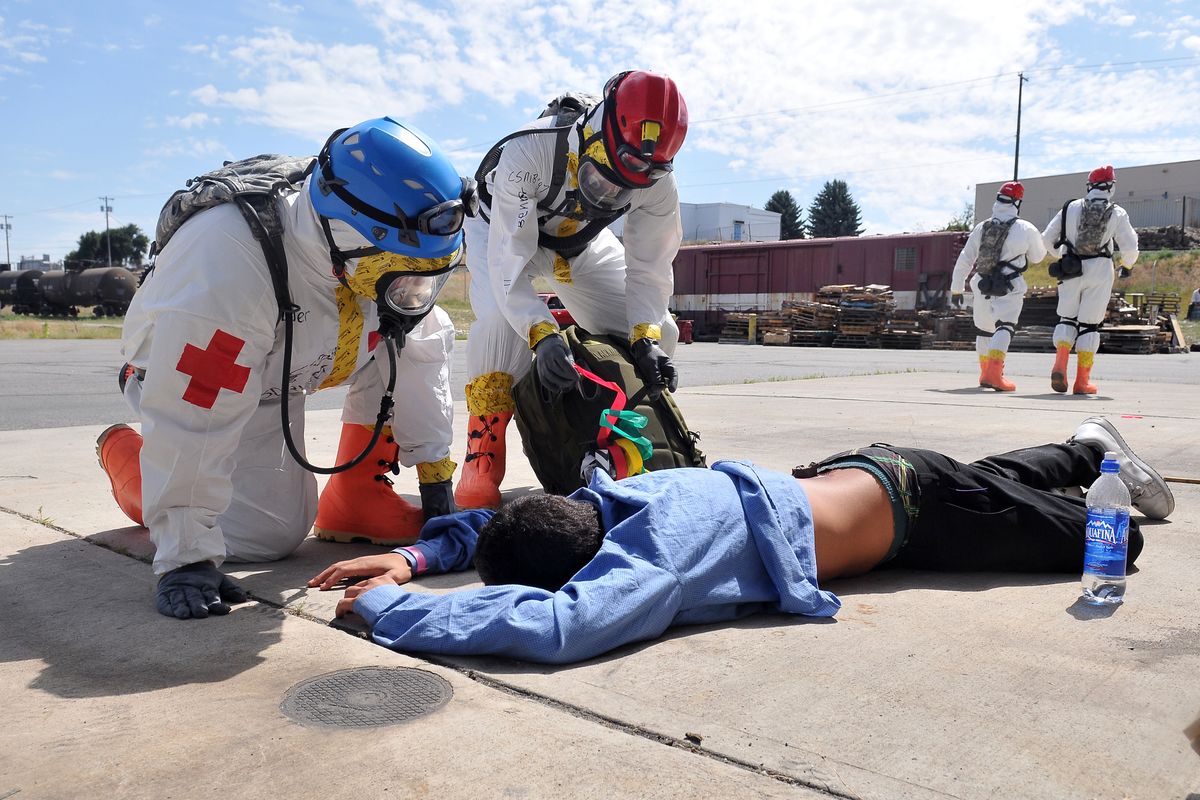Actors, fake gore help mimic potential terror attack, response
Newly organized force aims for quick response

Nearly 1,000 service members and civilians are sweating through a week of training in Spokane, preparing the Washington National Guard for the aftermath of a potential terrorist attack.
Washington was selected as one of 10 states to field a newly organized Homeland Response Force through the U.S. Department of Defense.
A total of 566 Guard members are assigned to the force, which is expected to get boots on the scene of a major attack within a matter of hours rather than days.
They are joined this week by civilian actors with simulated injuries that the service personnel triage and treat.
Their training scenario involves a bombing and chemical attack at two public facilities in Spokane.
The actual exercise is occurring over several days at city and state training facilities east of Spokane Community College.
During a decontamination exercise, dozens of service members were dressed in plastic suits with tape, face masks, breathing apparatus and water packs.
They were at the front end of an elaborate system of tents, water baths and medical facilities for treating contaminated patients.
Lower air temperatures gave them a break from the heat earlier this week, because the decontamination suits can be described in one word, said Specialist Jeffrey Wood: hot.
He said he made it for three hours without having to get out of the decontamination gear earlier this week.
The system is designed in part to keep local hospitals from being overrun by injured people.
Washington is getting more than $7 million a year, plus equipment, to develop and maintain the force. Most of the money goes for salaries.
The U.S. Department of Defense is reallocating federal funding to build the new regional forces, which are supposed to be able to respond at least three days faster than active-duty troops.
Once on the scene, they will have enough supplies for five days.
The forces are specifically trained to handle chemical, biological and nuclear, or radiological agents.
Major Gen. Timothy Lowenberg, the adjutant general of the Guard, said on Wednesday that regional response capability has been sorely inadequate until now.
“This is an absolutely sobering risk the nation faces,” he said of the potential for domestic attacks.
Washington and Ohio were chosen to gear up forces this year. Eight other states will follow next year. Each will cover several other states; the Washington unit will be responsible for Oregon, Idaho and Alaska, for example.
“We are proud we are leading the way,” Lowenberg said.
The new Homeland Response Force builds on a pre-existing team involving 180 Guard personnel. The new funding will add more than 380 service members to control and manage a large potential disaster in tandem with local authorities.
Force members have to respond to their bases within six hours, allowing the force to deploy in no more than 12 hours.
Spokane was chosen for training because of its array of military and civilian facilities, including the Spokane Fire Department’s rubble pile that is used for training in a scenario involving a collapsed building.